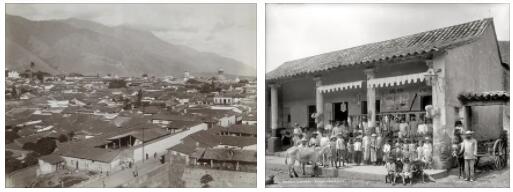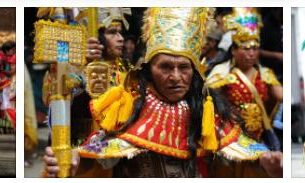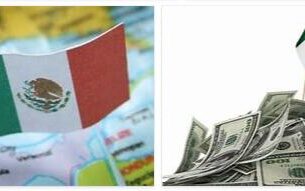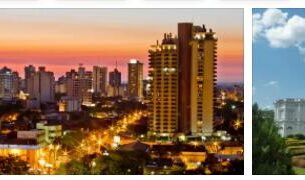Indigenous peoples
As early as 10,000 BC The area of today’s Venezuela was settled. The first hunters and gatherers came here via Central America. From 5000 BC BC the people settled down. Between 500 BC In AD 545 there was the Saladoid culture on the Orinoco plains. From there these people migrated to the Lesser Antilles and from there to Puerto Rico.
Over time, a large number of indigenous peoples have formed in Venezuela. Among them, the Caribs on the coast and the Wayúu and other Arawak peoples in the west were particularly numerous. Warao settled in the Orinoco Delta, Yanomami in the far south, in what is now the border area with Brazil.
First Europeans (from 1499)
The first European to come to what is now Venezuela was in 1498 Christopher Columbus. It was his third voyage, during which he went ashore at the Orinoco Estuary and thus set foot on the American mainland for the first time. In 1499 Alonso de Ojeda came. He was accompanied by Amerigo Vespucci and Juan de la Cosa. Because they saw stilt houses of the Indians, they gave the country the name Venezuela: Little Venice, at least that’s what legend says.
Colonization: Spaniards and Welsers
Cumaná was founded in 1515, and in 1522 colonization began on the island of Cubagua, where the Spaniards established a settlement called Nueva Cádiz. Here one hoped for wealth through pearls.
The north of today’s country was settled by Welsers in 1528, rich families from Nuremberg and Augsburg. The Spanish King Charles V gave them the area as a fief, because they had previously lent him a lot of money. In 1529 the city of Maracaibo was founded as Neu-Nürnberg. Not only did the Germans use violence against the Indians, the Spanish settlers also felt exploited. So Charles V finally canceled the contract again in 1546.
Spanish Viceroyalty (1535-1810)
In 1535 the viceroyalty of New Spain was founded, which initially included Venezuela. In 1542 the Spaniards founded the viceroyalty of Peru, which included almost all of South America. Millions of indigenous people died as a result of violent colonization. Many peoples and cultures were completely wiped out, for example the Caquetíos, Quiriquire and Jirajara in the northwest or the Otomaks on the Apure River.
In the end, many slaves were brought here from Africa to work on the newly established plantations for coffee, cocoa, sugar or tobacco. Caracas was founded in 1567. From 1577 a governor was installed to better manage the large area.
Catholic missionaries soon arrived, who turned the Indian population into Christians. In 1717 the viceroyalty was divided. The northern area became the viceroyalty of New Granada (1717-1810). It comprised the present-day states of Venezuela, Colombia, Panama and Ecuador.
History of Venezuela from independence to 1958
Struggle for independence from 1811 and Greater Colombia (1819-1830)
The call for independence from Spain grew steadily. In 1806 Francisco de Miranda failed due to a lack of support. On April 19, 1810, the Spanish captain general was deposed. And on July 5, 1811, Venezuela finally declared its independence.
In 1819 Simón Bolívar united the area that today includes the states Panama, Colombia, Venezuela and Ecuador to form the “Republic of Colombia”. To distinguish it from today’s state, it is now called Greater Colombia.
But Spain did not want to accept that for a long time. There were numerous battles, such as the Battle of Carabobo in 1821 or the Battle of Lake Maracaibo in 1823. Bolívar’s troops were victorious and Spain eventually had to accept the independence of its former colonies. As early as 1830, however, Greater Colombia fell apart after Bolívar’s death. Venezuela and Ecuador split off.
Caudillos and dictators
Caudillos, strong military leaders, ruled the country from the 19th century to the middle of the 20th century. Among them was Juan Vicente Gómez, who ruled Venezuela as dictator for many years between 1908 and 1935. Democratic change slowly began under the presidents who followed him. In 1918, oil production began on a larger scale.
Trienio (1945-1948)
In 1945 there was a coup by communists and social democrats when Isaías Medina Angarita refused to grant universal suffrage. Reforms were carried out, the social democratic party Acción Democrática (AD) took power. President was Rómulo Betancourt. This time lasted three years and is therefore called Trienio (in German: period of three years) Adeco (from AD).
Putsch of 1948 and dictatorship under Marcos Pérez Jiménez until 1958
In 1948 another coup ended the short democratic period. A soldiers’ council took power, and Marcos Pérez Jiménez was president from 1952.
The political change of 1958
Marcos Pérez was overthrown and Rómulo Betancourt was re-elected president (1959-1964). His AD and the Christian Democratic Party (COPEI) were the leading parties for the next few decades, alternating presidents. From 1969 to 1973 Rafael Caldera (COPEI) was President.



